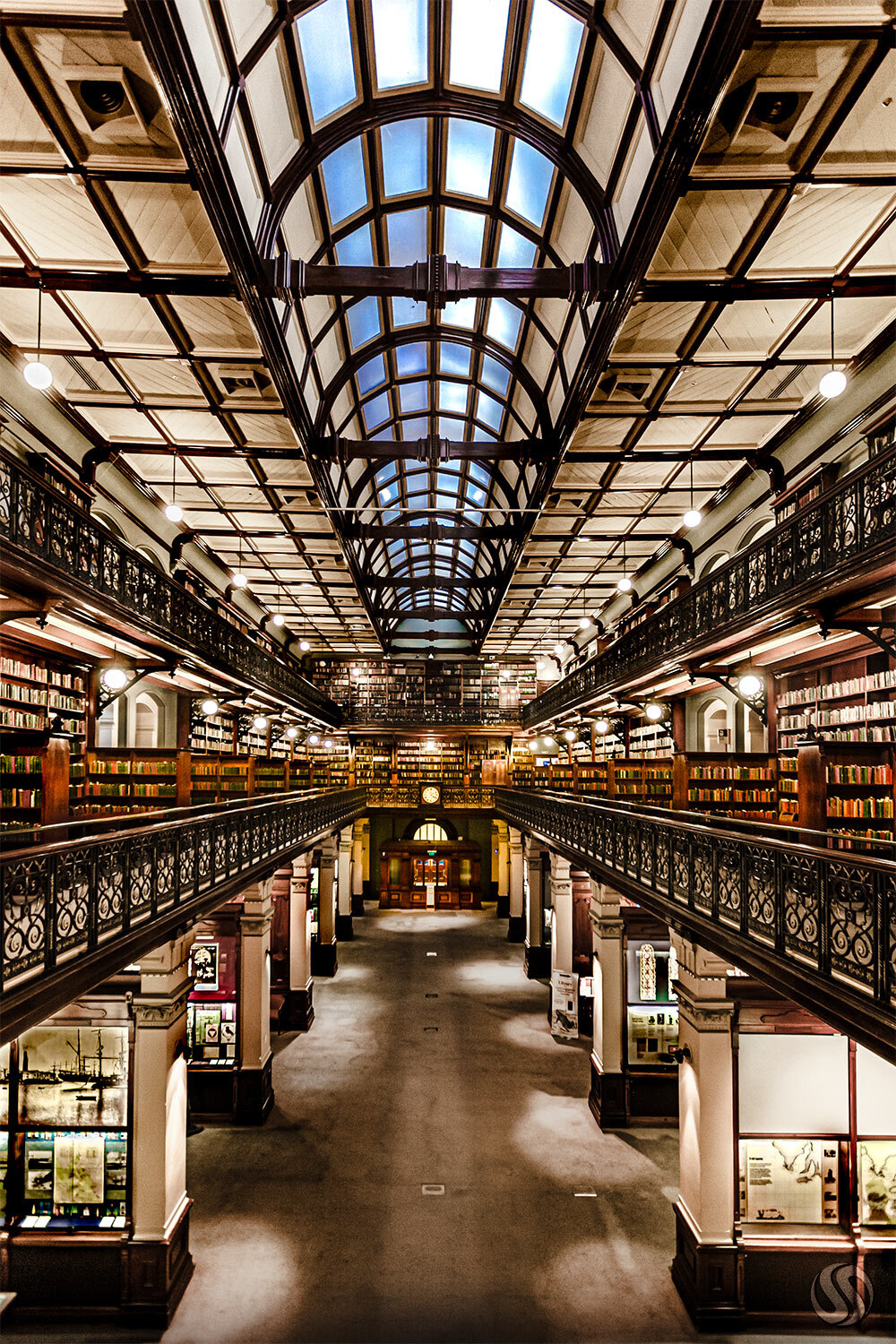
This French Renaissance style building with a mansard roof was opened as the "Public Library, Museum and Art Gallery for the colony of South Australia" on 18th December 1884.
Seen here is the main interior chamber of the Mortlock Wing that has two galleries, two levels of balconies featuring gold-ornamented wrought iron balustrading, and the beautiful glass-domed roof that allows natural light to flood the chamber.
Visit this site on Google Street View
Read the history of the Mortlock Wing
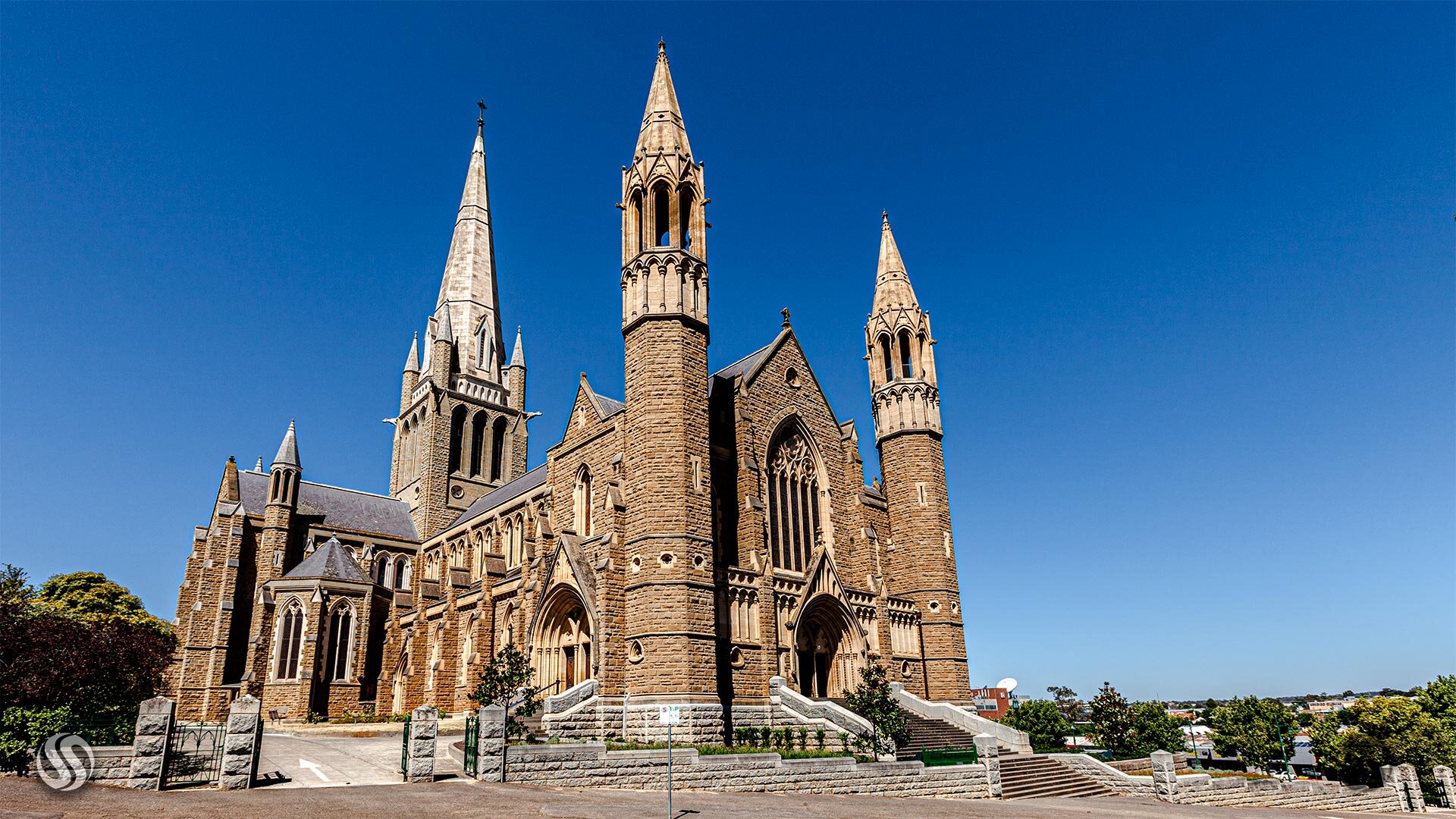
Construction of this Gothic Revival style cathedral began in 1897 but was completed only 80 years later in 1977. With an 87 m spire, this is the third tallest church in Melbourne.
See this scene on Google Street View.

Berlin is known for its hundreds of beautiful and unique courtyards, but the hidden courtyard within Schwarzenberg House at Hackescher Market in Berlin is my favourite. It’s home to hidden shops, bars, cafés, museums, and works of art.
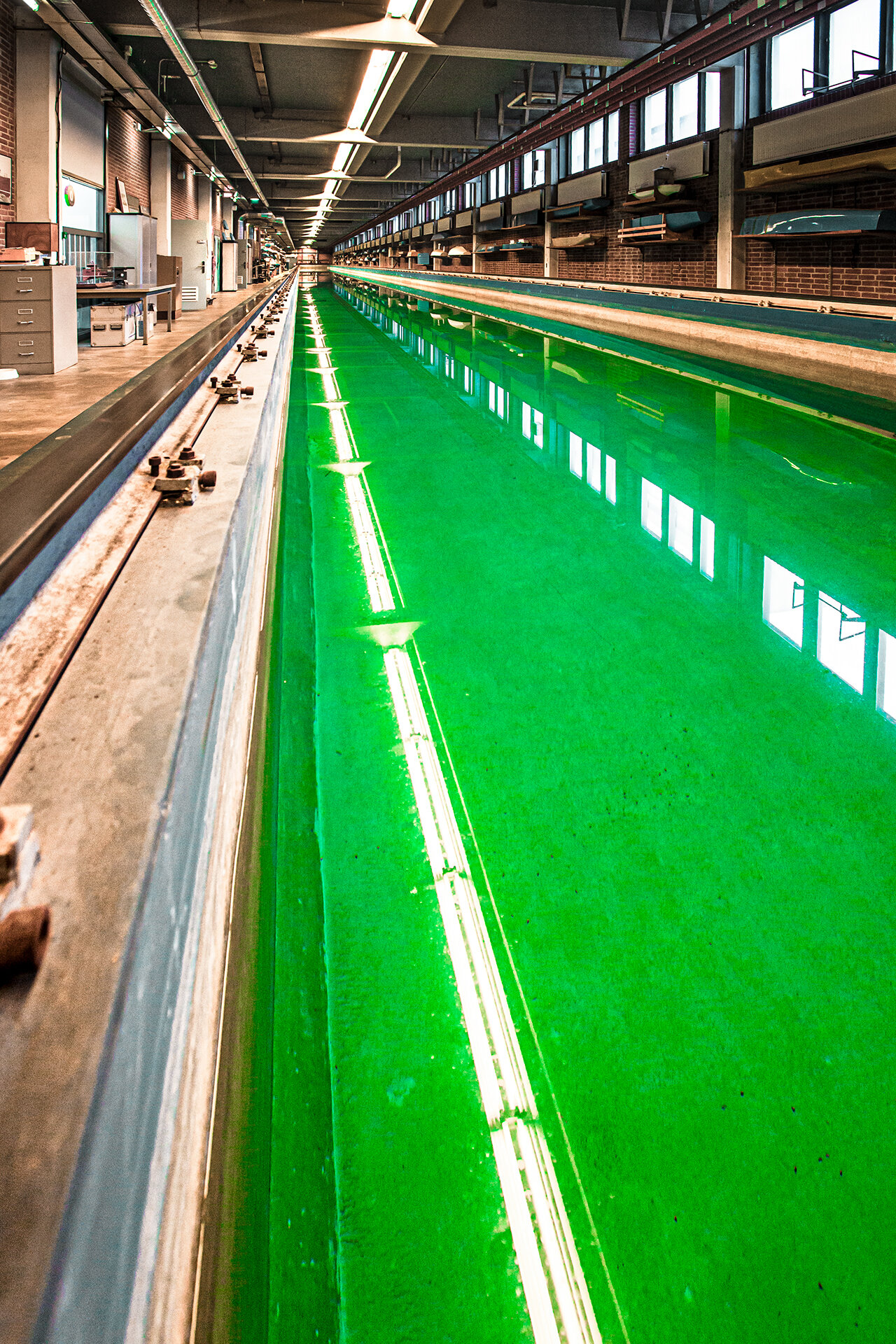
This 142 m towing tank at the Technical University of Delft is used to test and study ship hydromechanics.
More on Towing Tank 1.
Visit TUDelft on Google Maps.
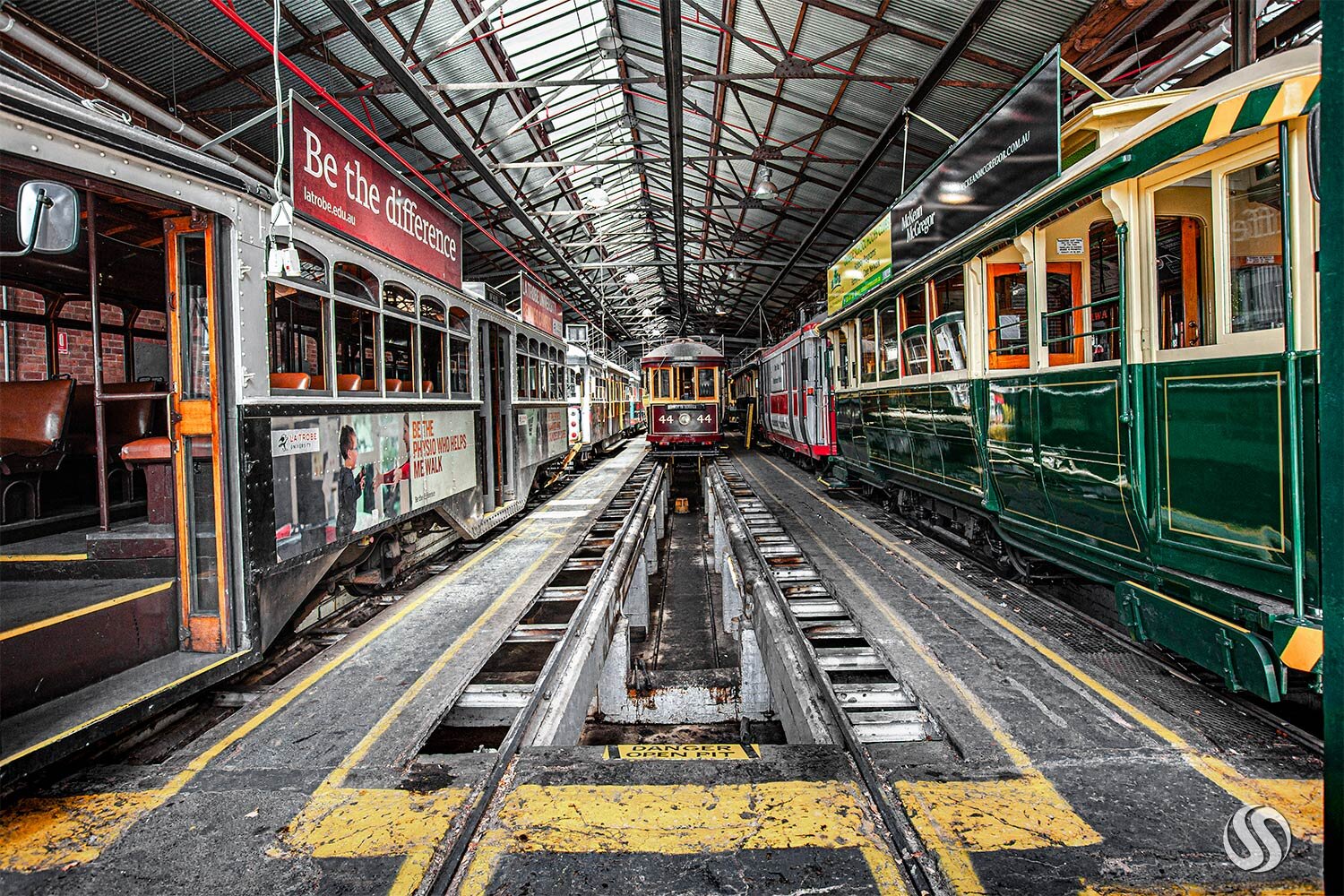
Bendigo Tramways started operating in June 1890. Since then, people in this small town have seen their trams propelled by battery, steam, and finally, electric traction. The depot repairs and maintains the trams in fantastic condition.
Visit the Bendigo Tramways website.
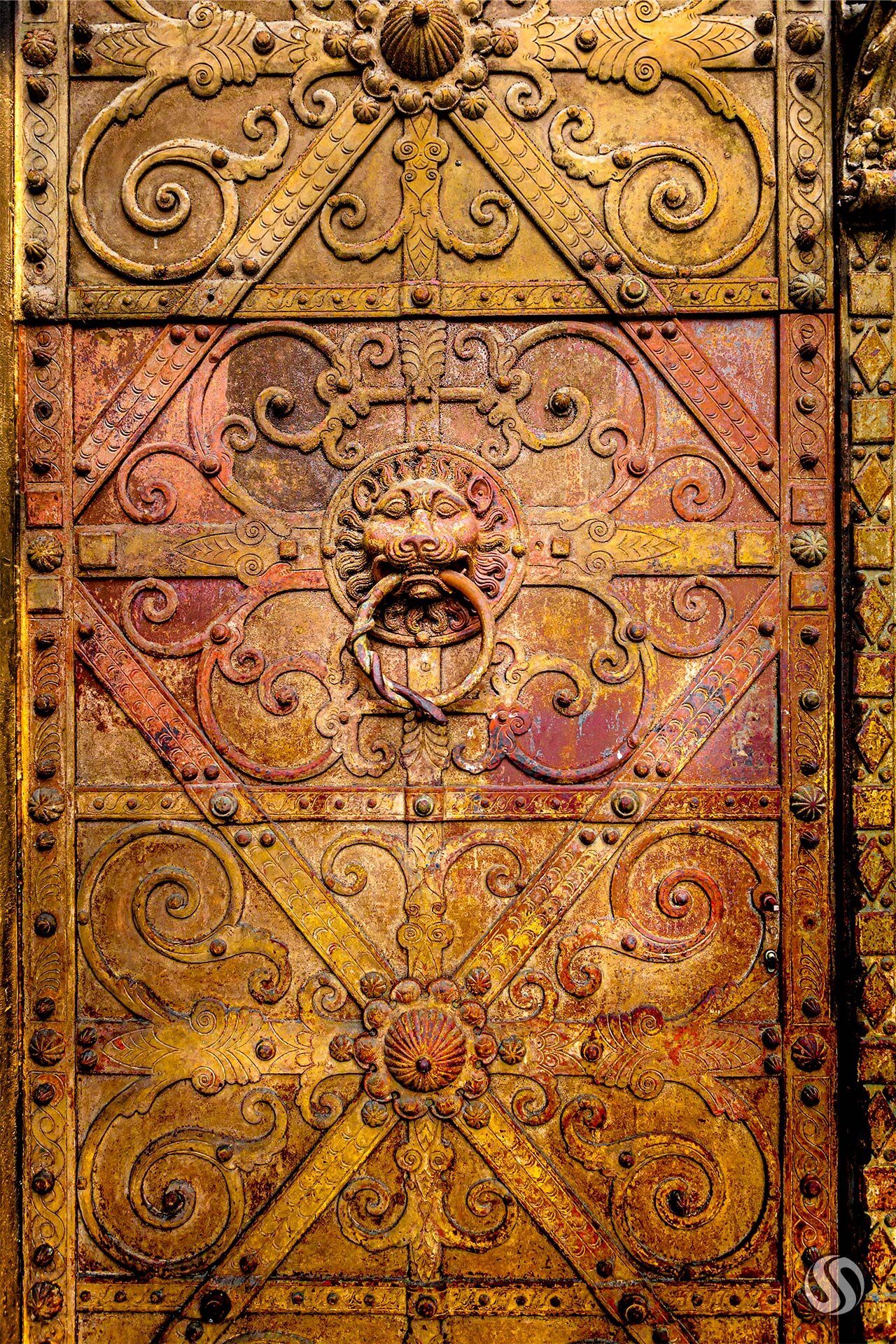
This ornate metal door is one of four that can be found at the twin-entrances to the museum. The museum was founded by King Maximilian II of Bavaria in 1855.
See these entrances on Google Maps.
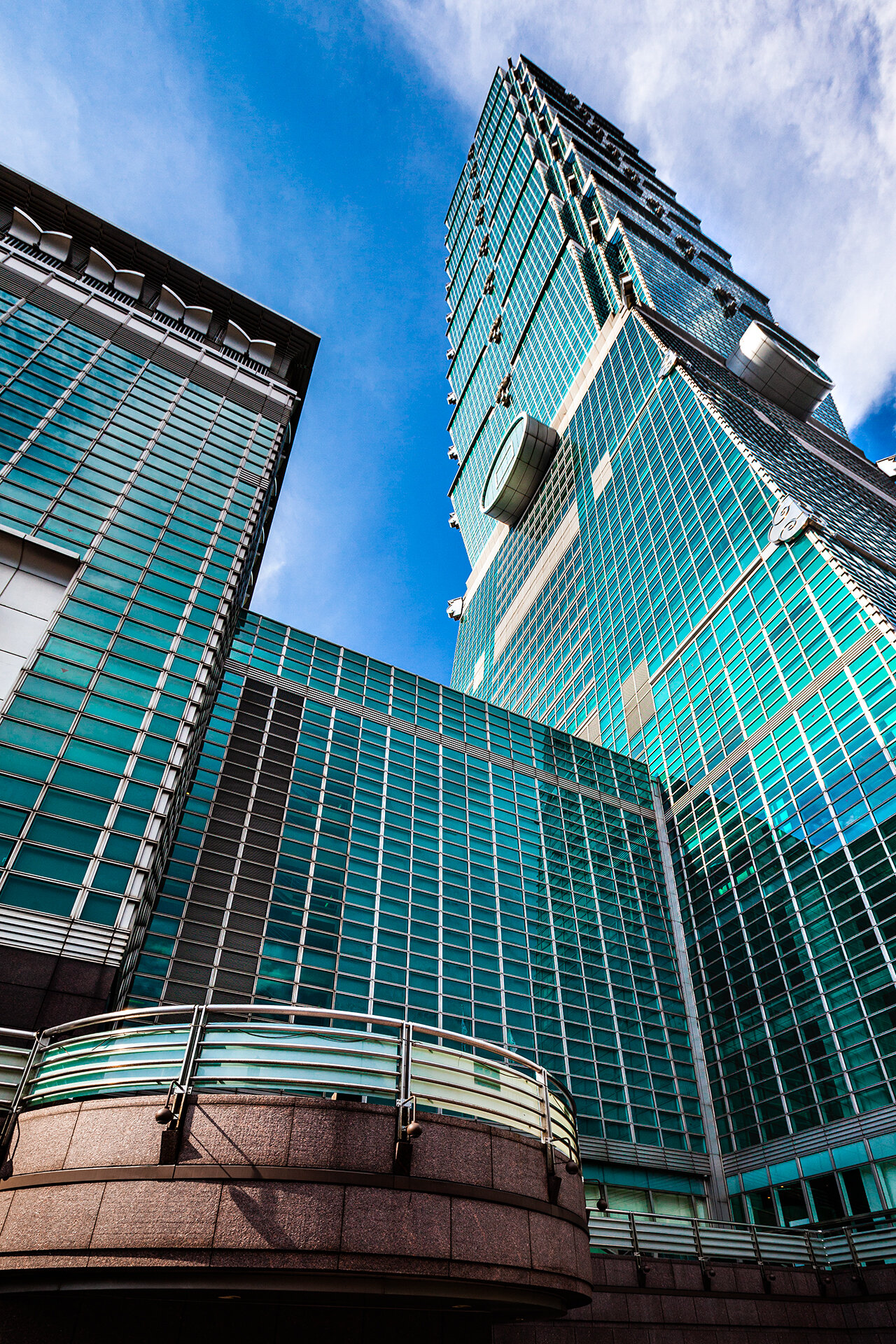
This skyscraper designed by C.Y. Lee and C.P. Wang was officially classified as the world's tallest from its opening in 2004 until 2010.
In 2011 Taipei 101 received a Platinum rating under the LEED certification system, becoming the tallest green building in the world.
Visit Taipei 101 on Google Maps.
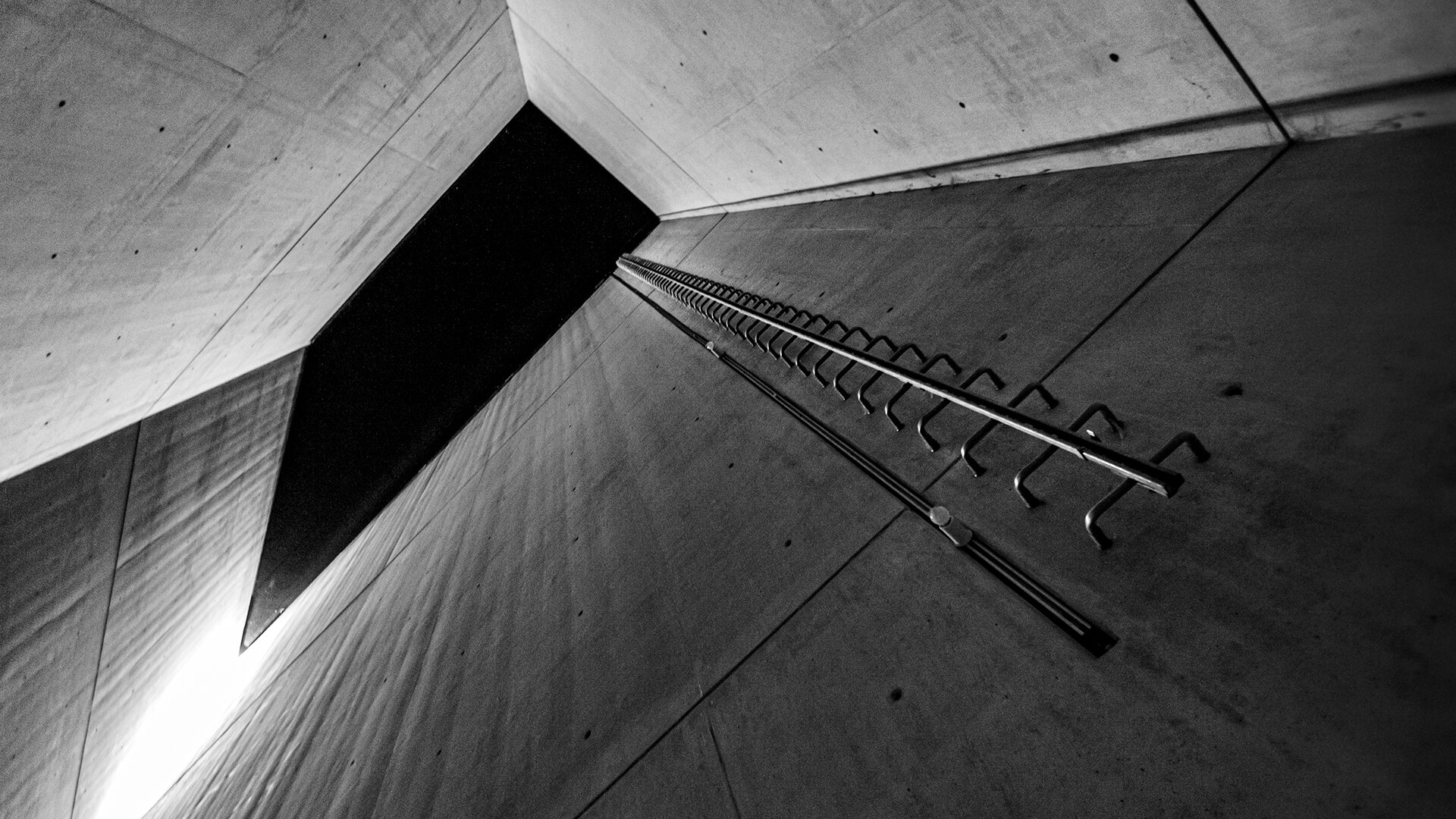
The Holocaust Tower is a 24 m tall silo designed by architect Daniel Libeskind within the premises of the Jewish Museum in Berlin.
The bare concrete structure is neither heated nor cooled, and its only light comes from a small slit in its roof.
Visit the Holocaust Tower on Google Maps.
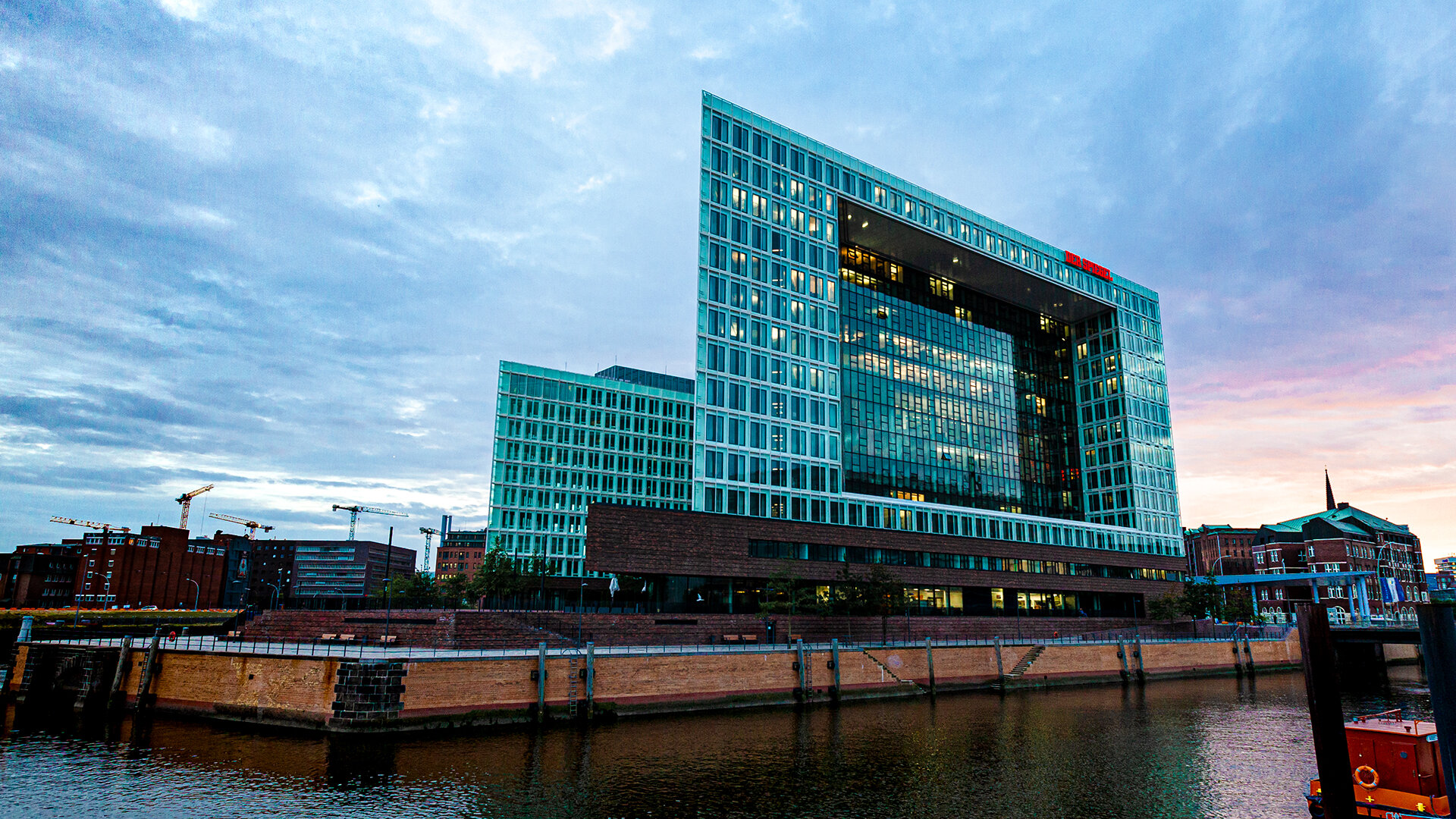
Known for its investigative journalism department, Der Spiegel operates one of the most widely read German-language news websites and publishes Europe’s most circulated weekly news magazine.
Der Spiegel headquarters in Hamburg was designed by Henning Larsen Architects and completed in 2011.
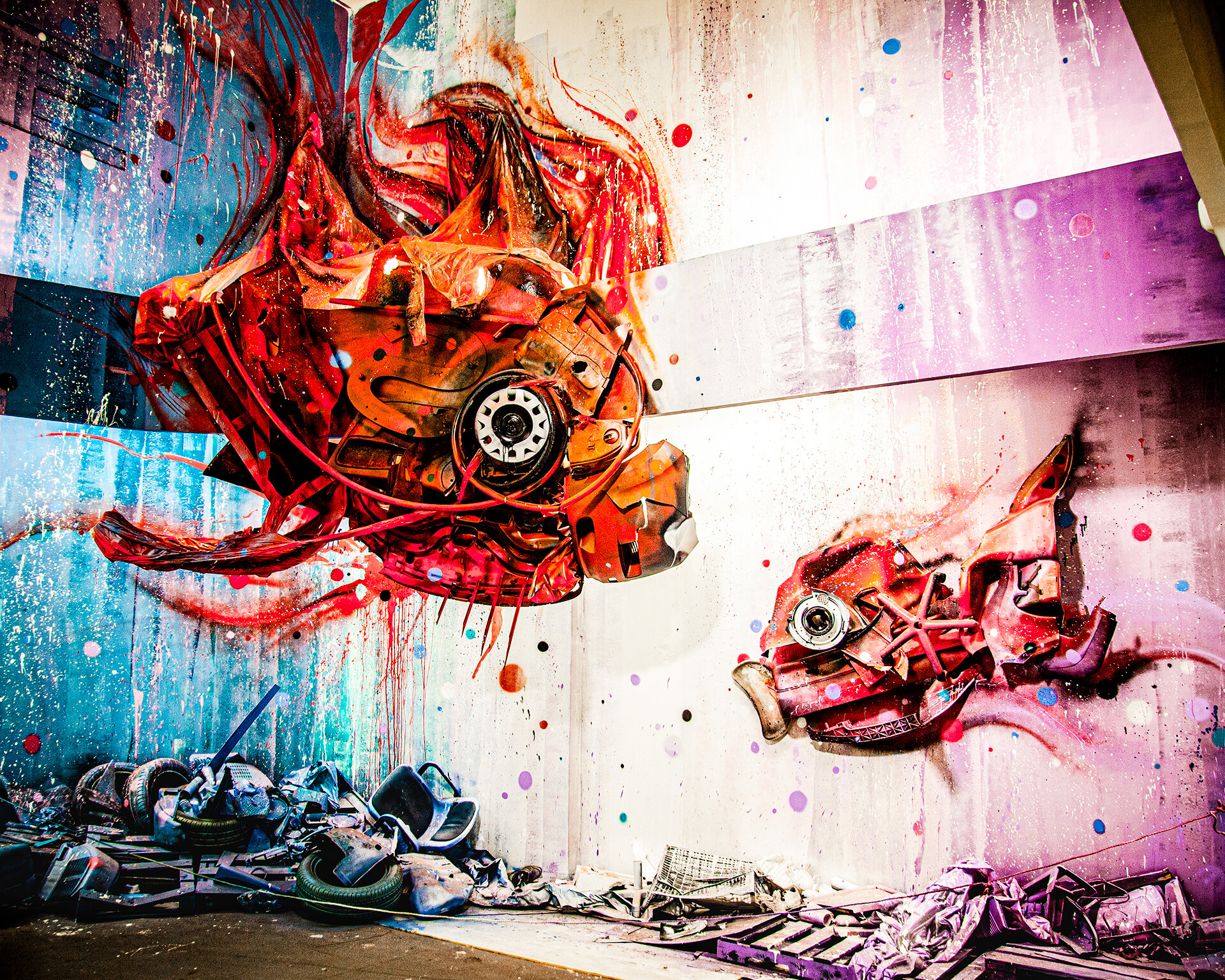
Dirty Aquarium (2013) is an art installation within an indoor car park in Lisbon by artist Artur Bordalo aka Bordalo II.
The materials for this installation came from garbage collected along the shores of the river Tagus.
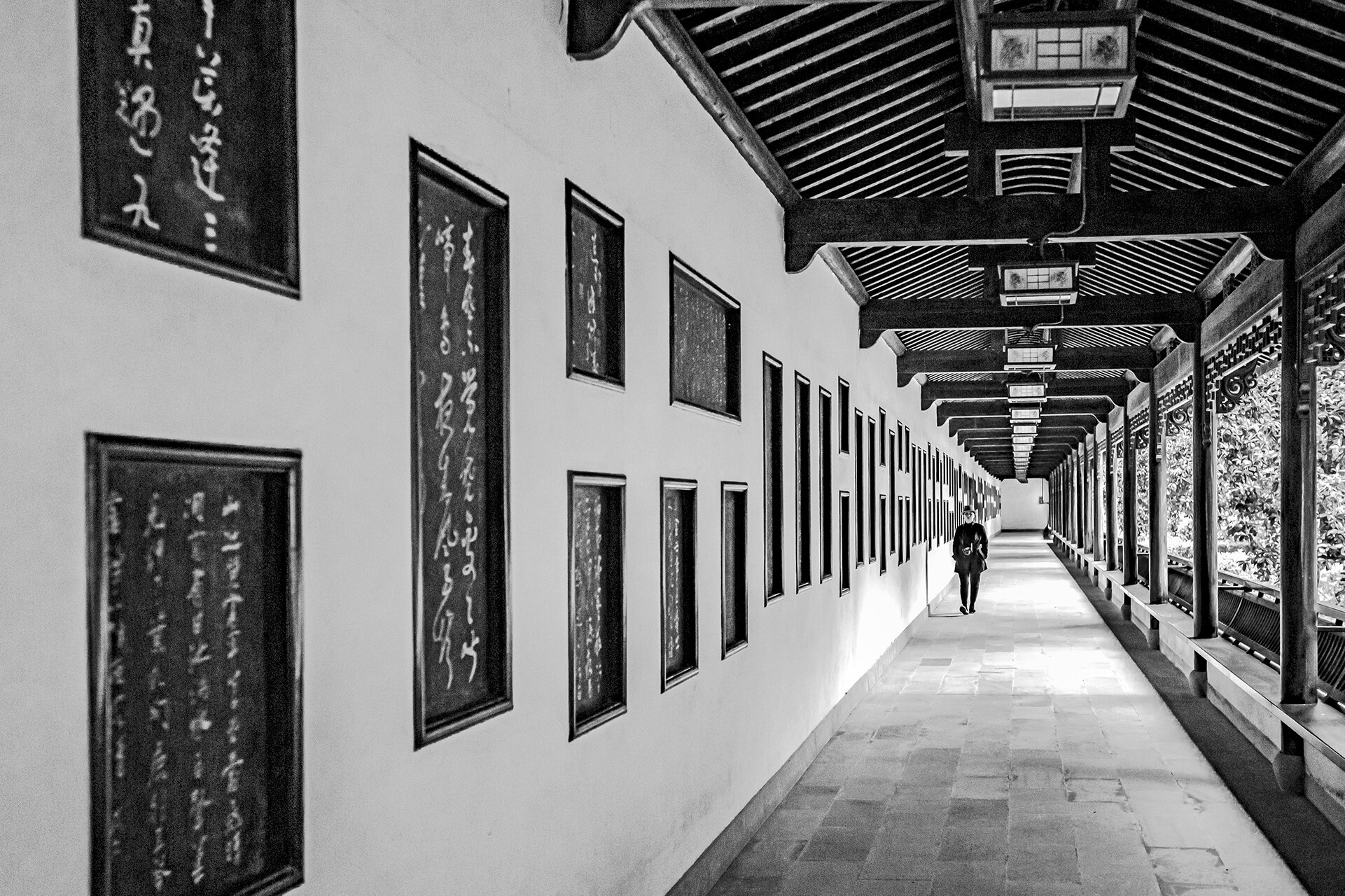
This large private garden and park is home to multiple buildings and structures, including this aisle of calligraphy.
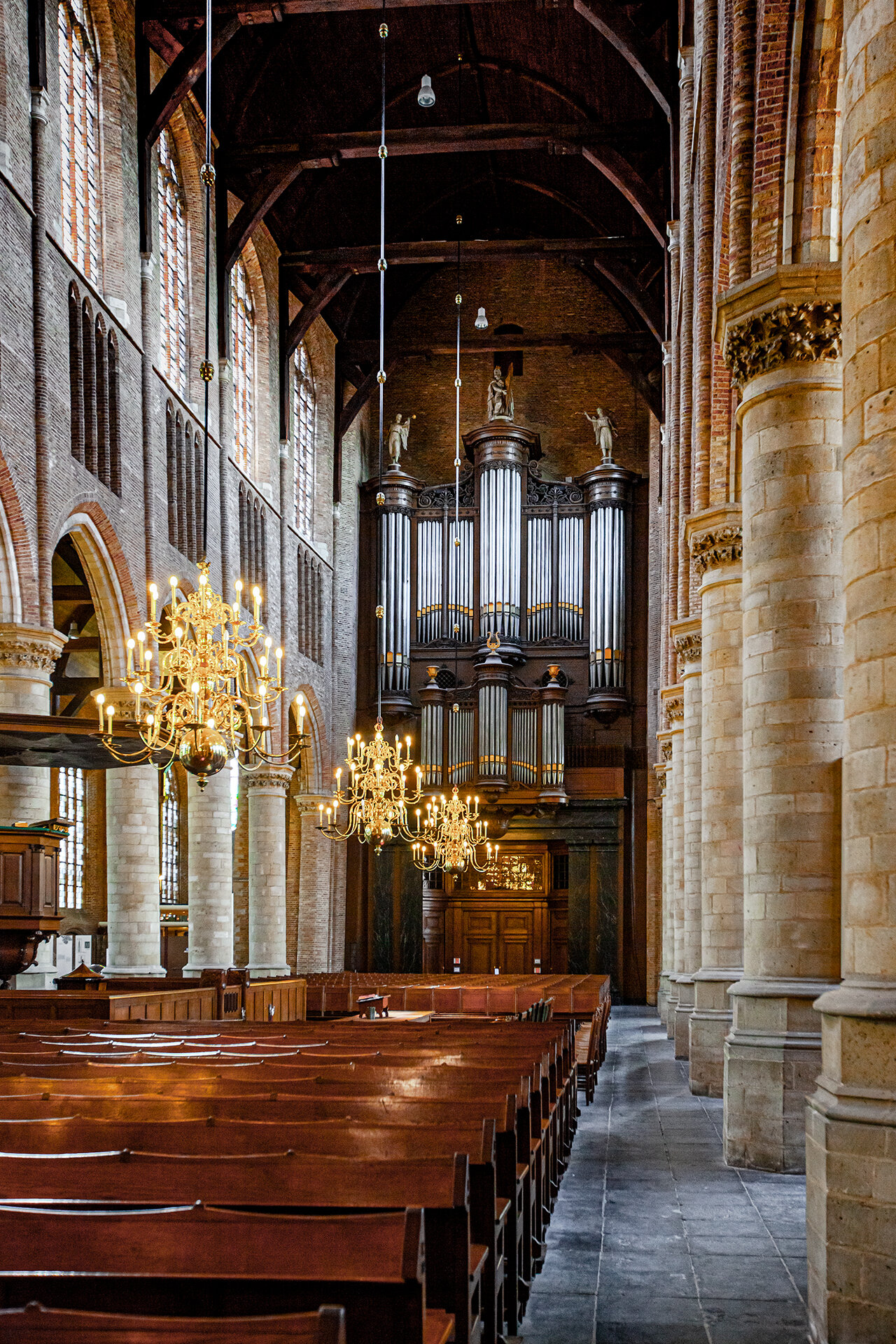
Built with more than three thousand pipes, this instrument is one of three large pipe organs designed and built by Jonathan Bätz. It was constructed between 1837 and 1839 and is still in use today
Visit the Delft New Church website.
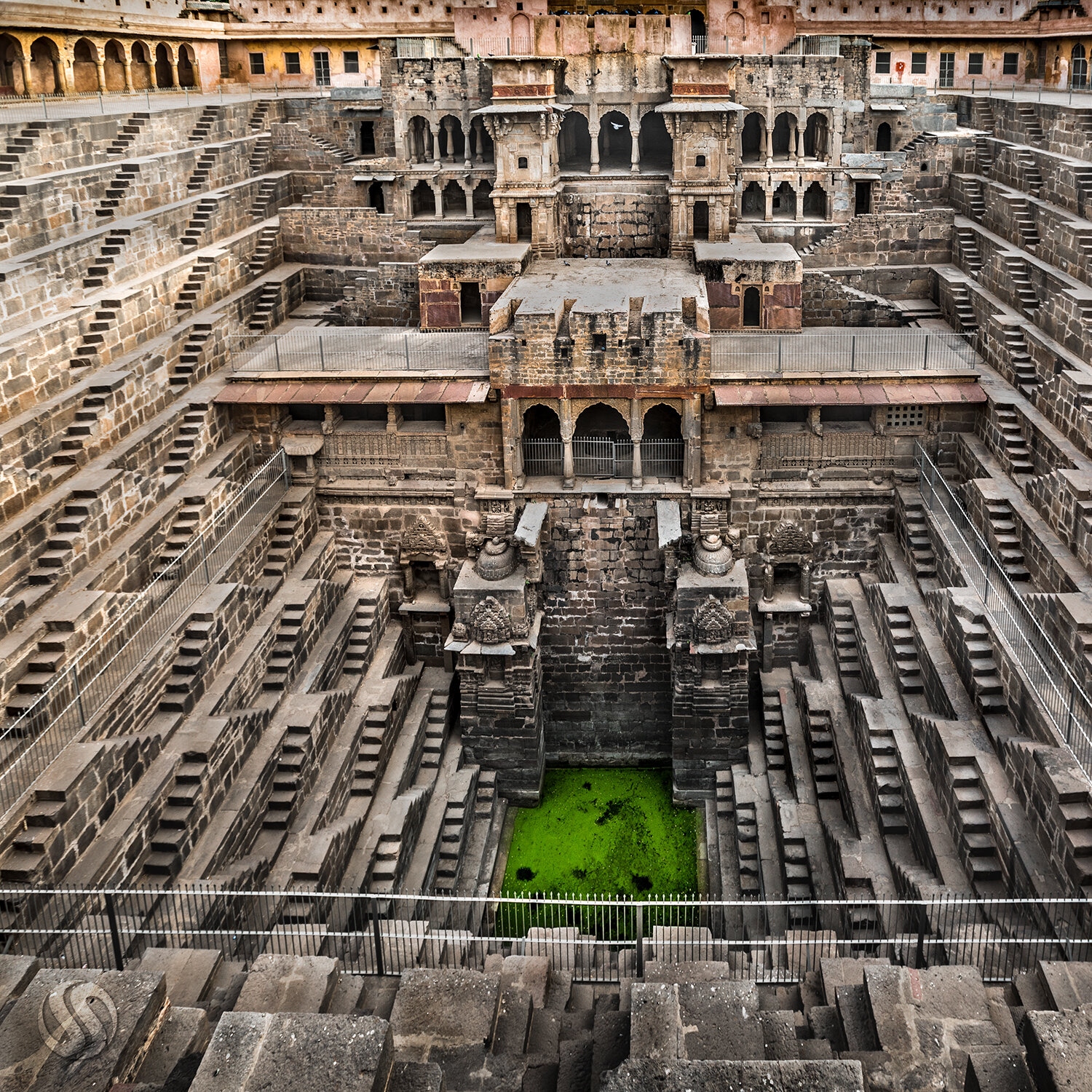
Chand Baori is a step-well situated in the village of Abhaneri near Jaipur. It consists of 3,500 narrow steps and extends approximately 30m into the ground making it one of the deepest and largest step-wells in India.
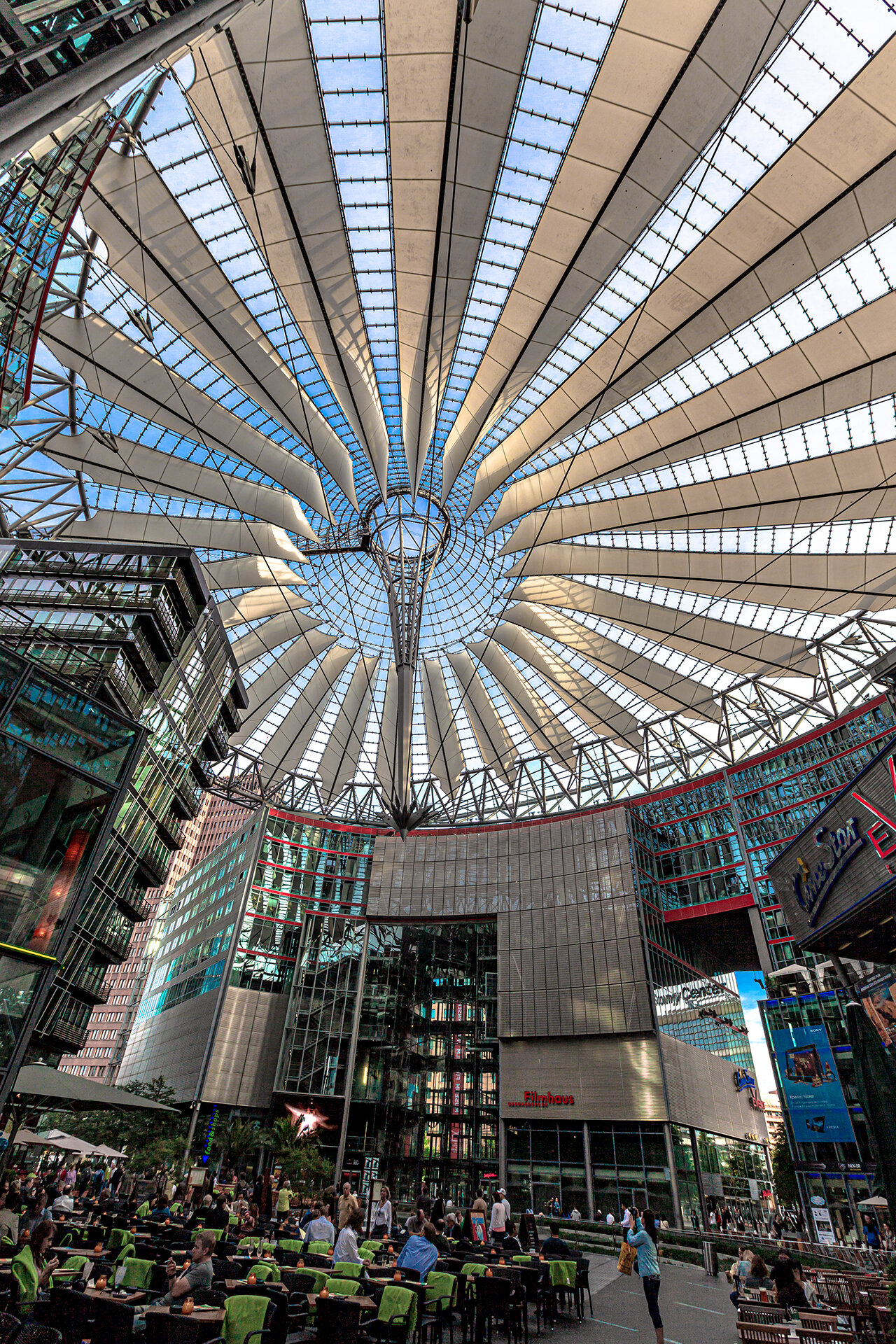
The Sony Center is a Sony-sponsored building complex located at the Potsdamer Platz in Berlin, Germany designed by Helmut Jahn. It opened in 2000 and houses Sony's German headquarters.
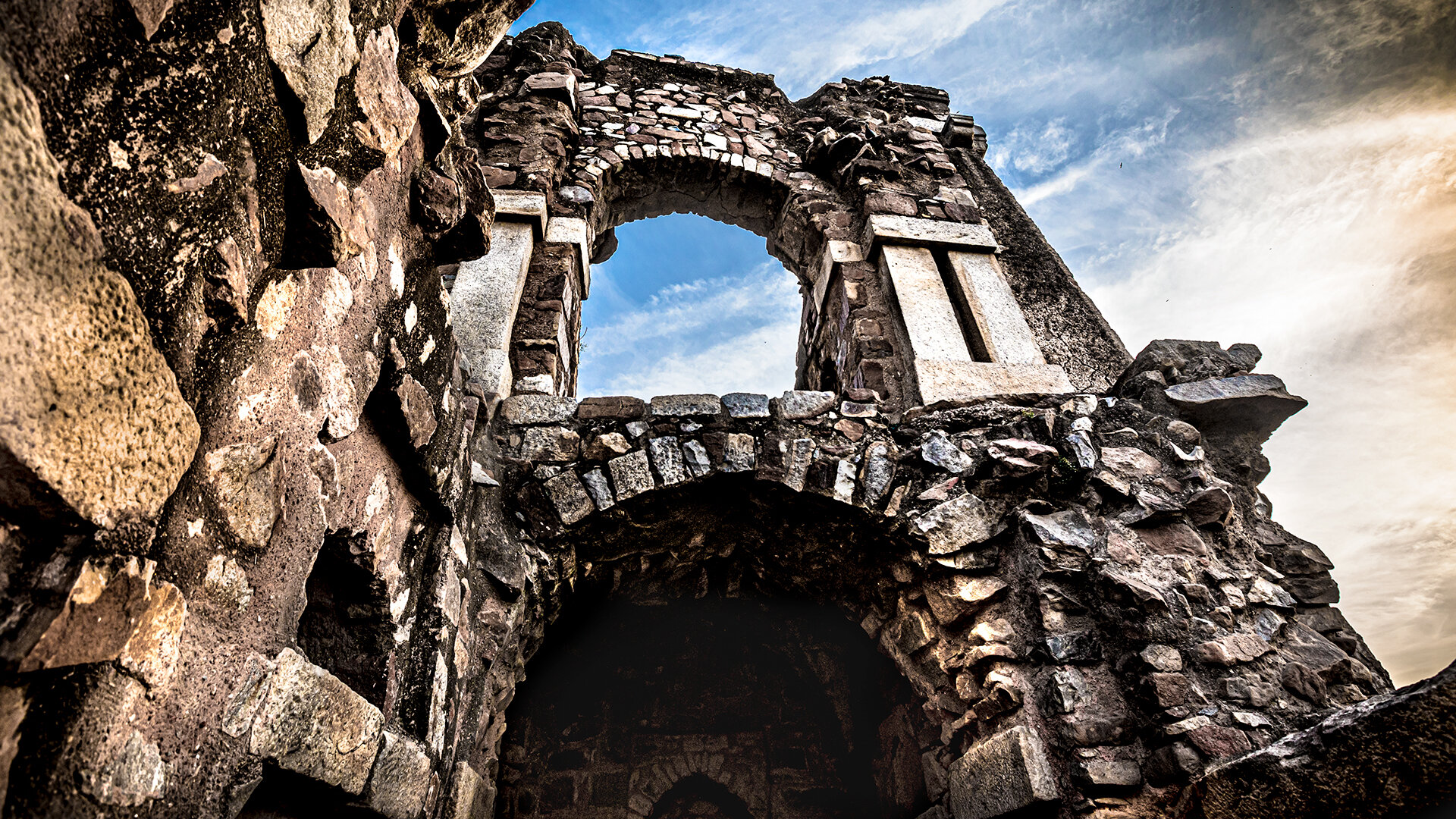
This 13th-century complex built during the Delhi Sultanate reign houses a water tank, an Islamic seminary, a mosque, a tomb, and pavilions built around an urbanized village dating back to the medieval period.
Visit the Hauz Khas Complex on Google Maps.
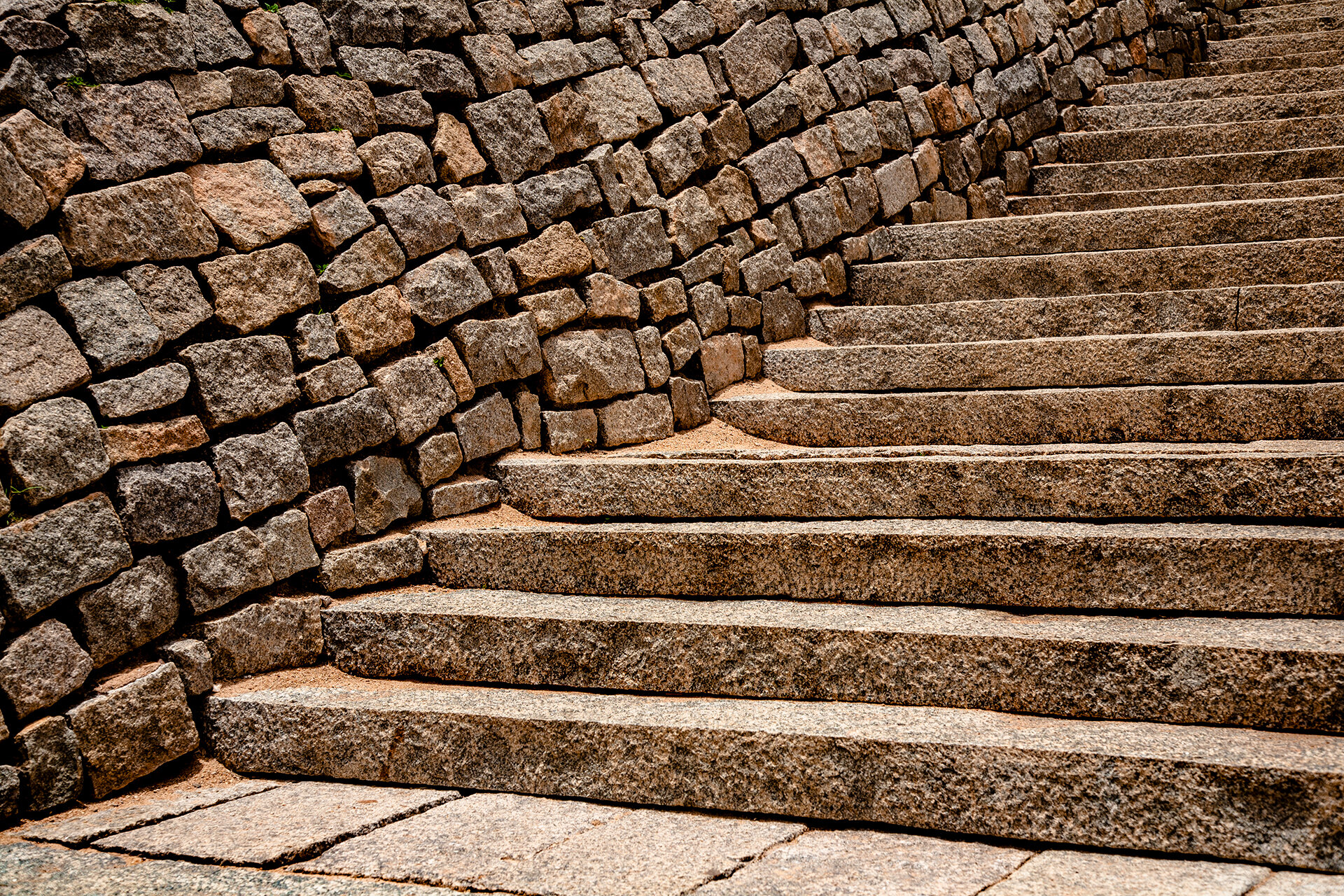
These steps and other structures in the 14th-century Shiva temple in Hampi have been buried for more than 400 years and were unearthed in the 1980s. Hampi today is a UNESCO World Heritage Site.
Visit this Underground Shiva temple on Google Maps.
In a 2013 collaboration, Italian street artist Pixel Pancho and Portuguese street artist Vhils combined their unique styles to create this mural located in Lisbon.
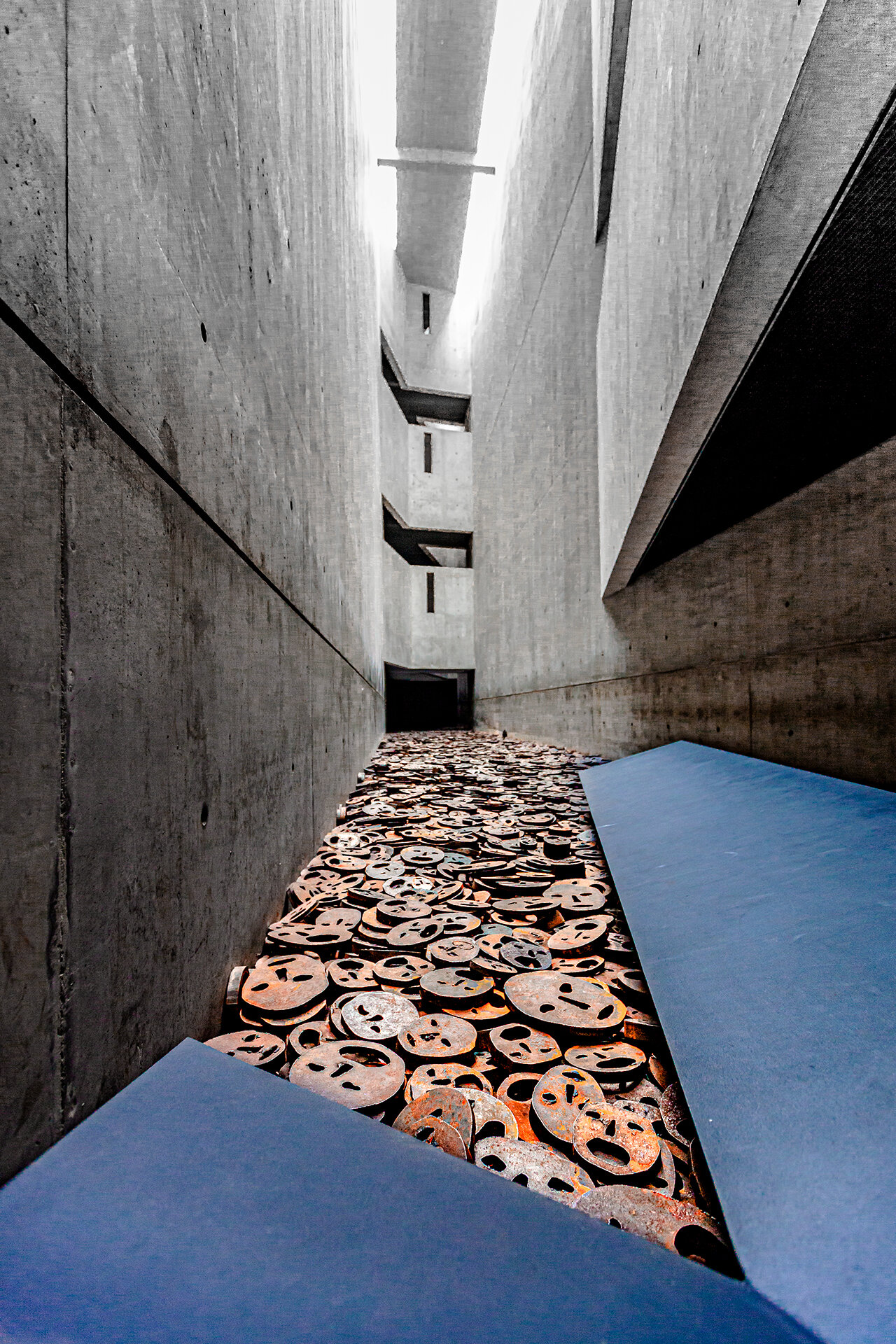
The Memory Void, one of the symbolic spaces on the ground level of the Libeskind building, includes the installation Shalekhet by Menashe Kadishman which pays homage to victims of war.
More than 10,000 faces with open mouths, cut from heavy round iron plates, cover the floor of the void.
Visit the Shalekhet web page.
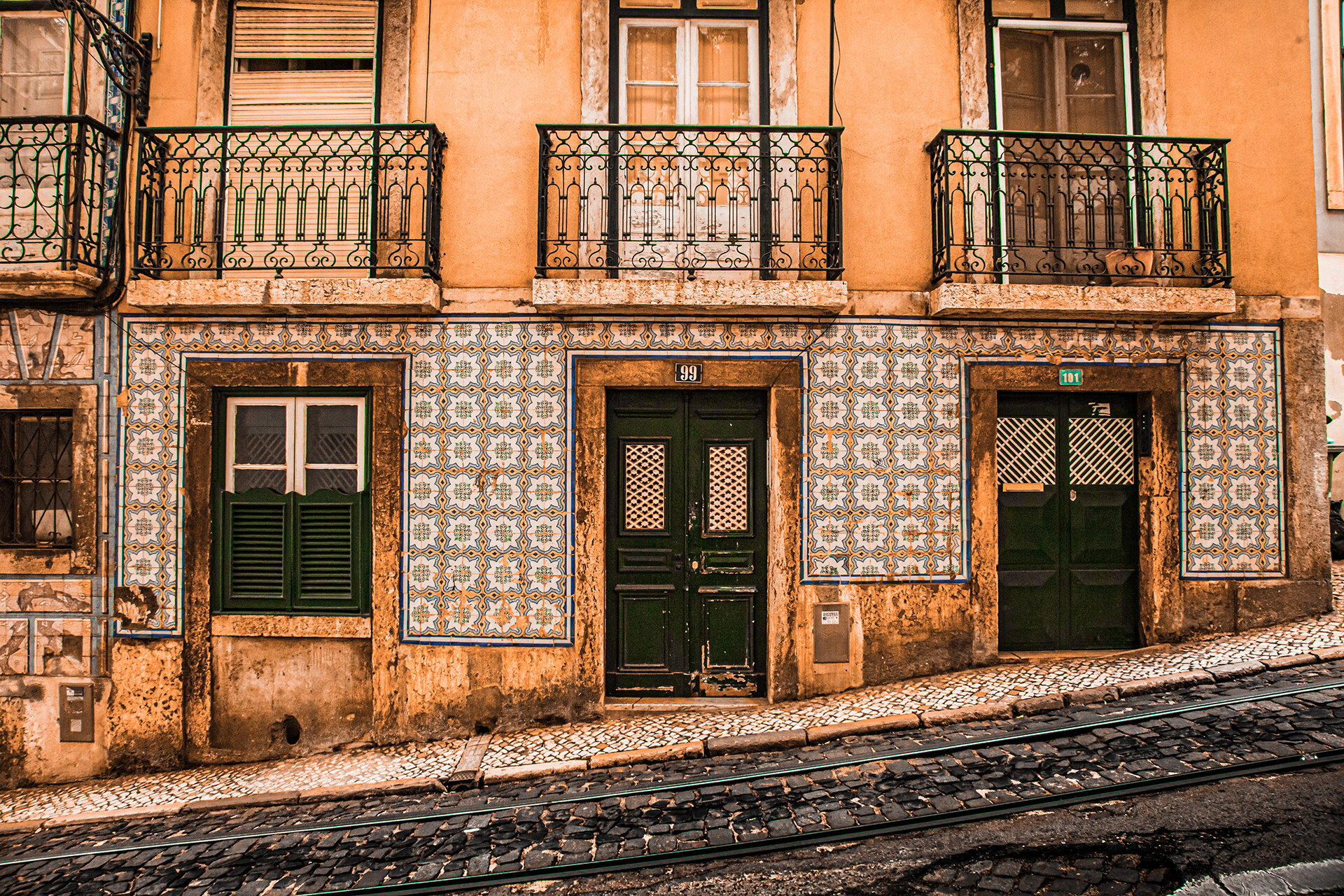
It is tradition to build narrow, long, and tall houses in Portugal. Building this way preserves heat within the interior, and allows each construction to make the most of the land it has been allocated. I was amazed at how the Portuguese build straight on slopes. These two houses have different roof-clearance heights on the ground floor though they are in the same building. They are also surprisingly close to the tram track.
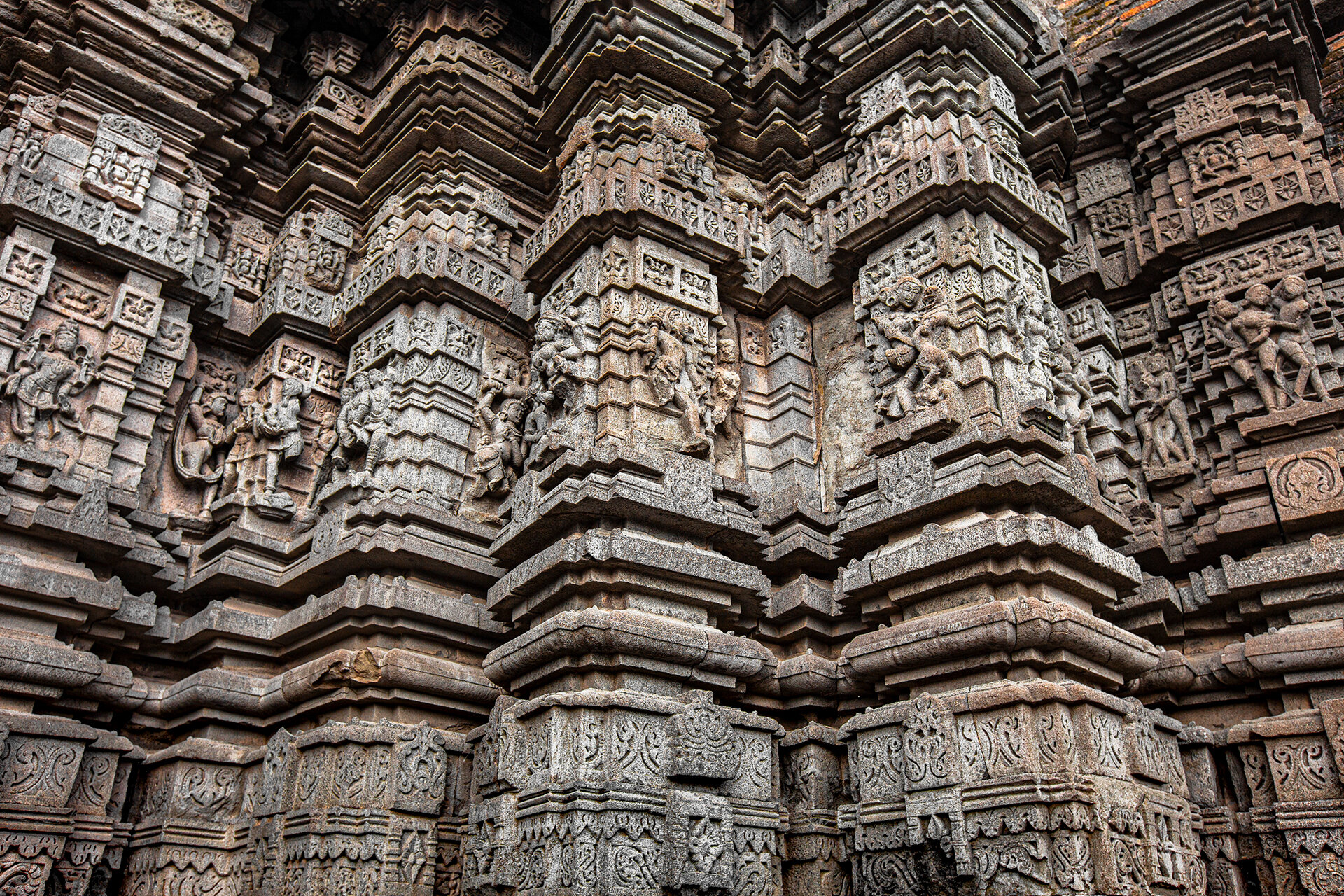
This 6th-century temple built in the Hemadpanthi architectural style consists of numerous ridges on the exterior with decorative images having iconic as well as artistic significance. These hand-carvings depict deities or events referred to in Hindu Puranas.
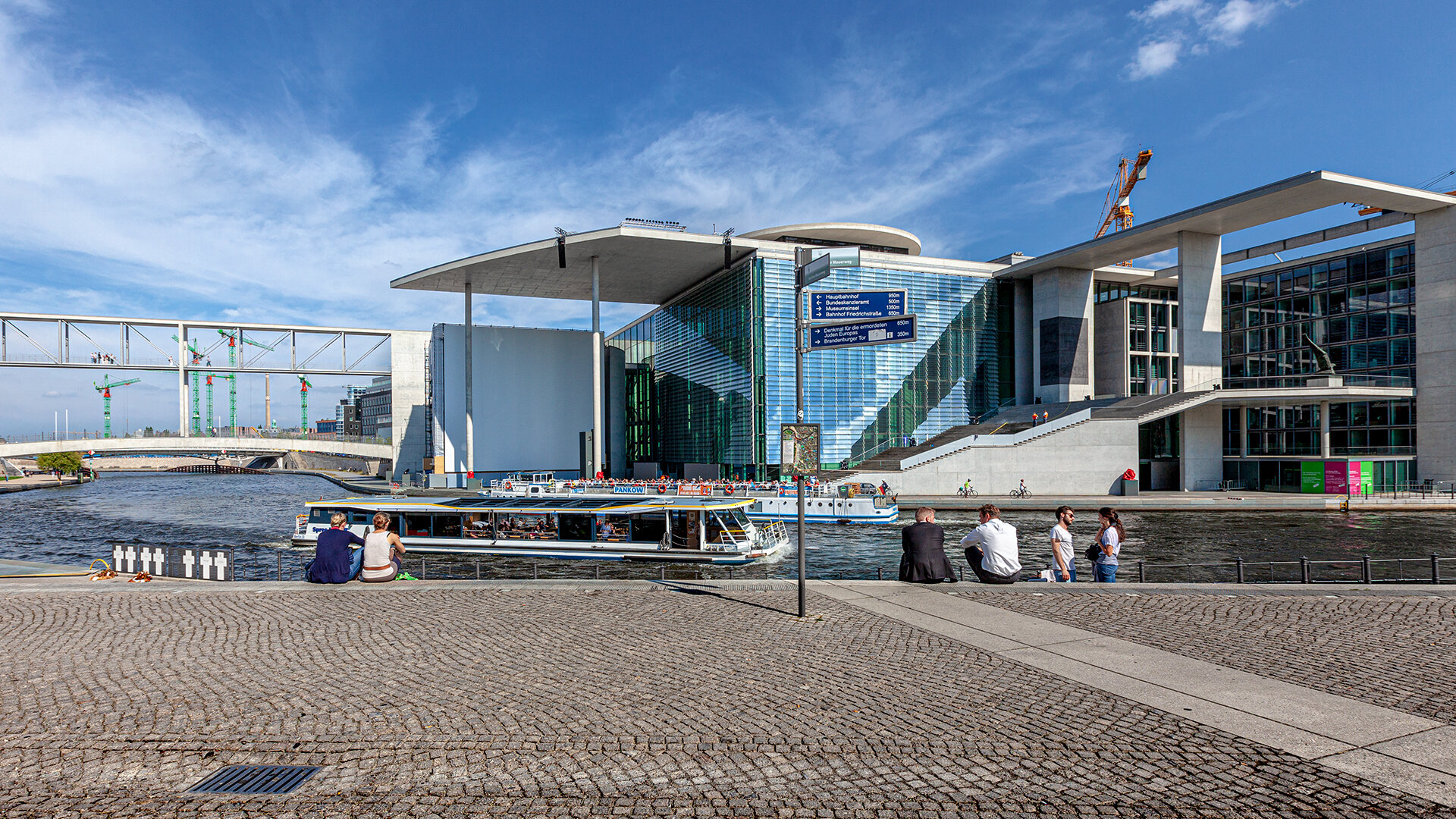
The Marie-Elisabeth-Lüders-Haus is the third new parliament building on the Spree and was inaugurated in December 2003.
See the Parliament on Google Maps.
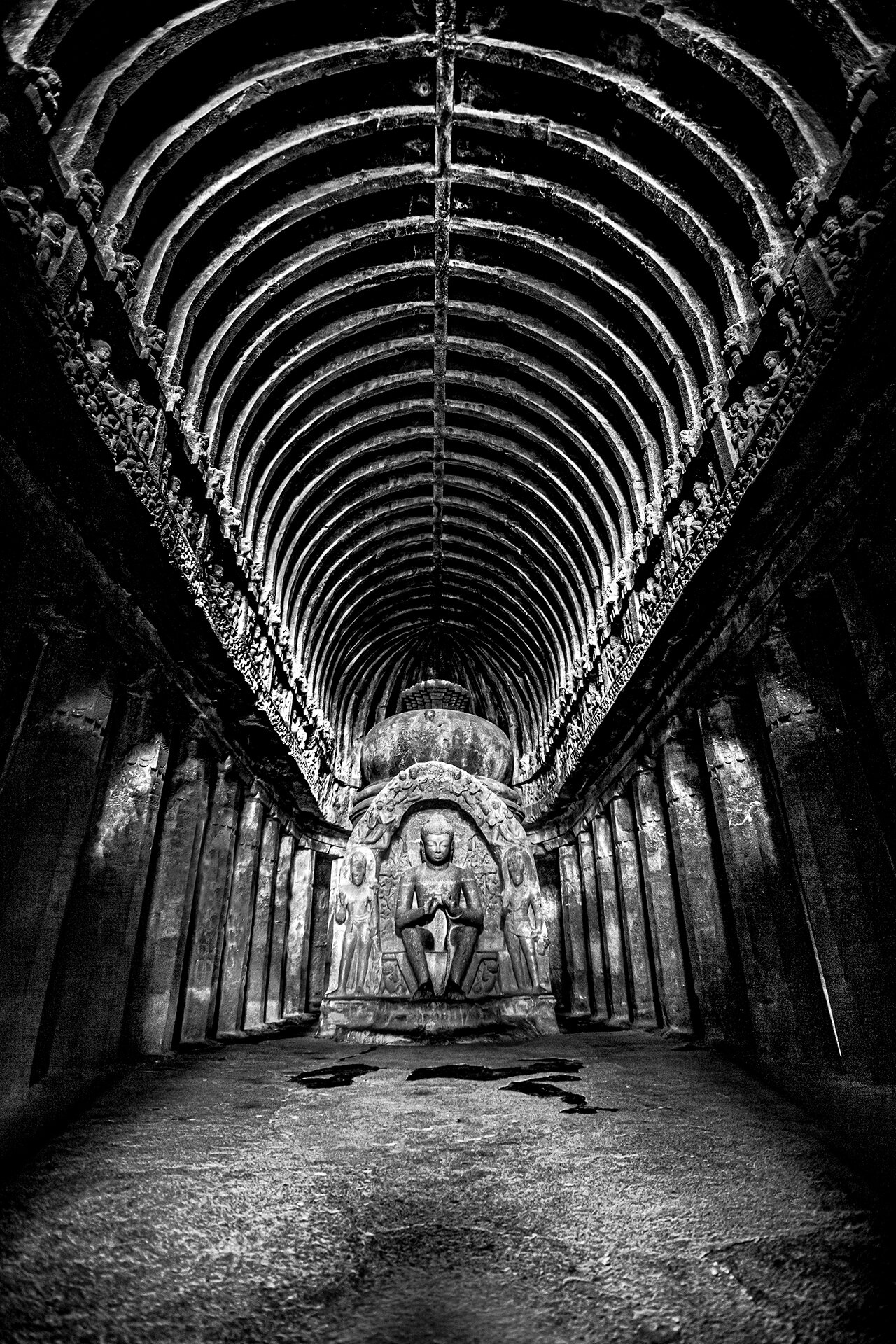
Carved into solid rock around 650 CE, Ellora Cave-10 houses a cathedral-like stupa hall used for prayer. At the heart of this cave is a 15-foot statue of Buddha seated in a preaching pose
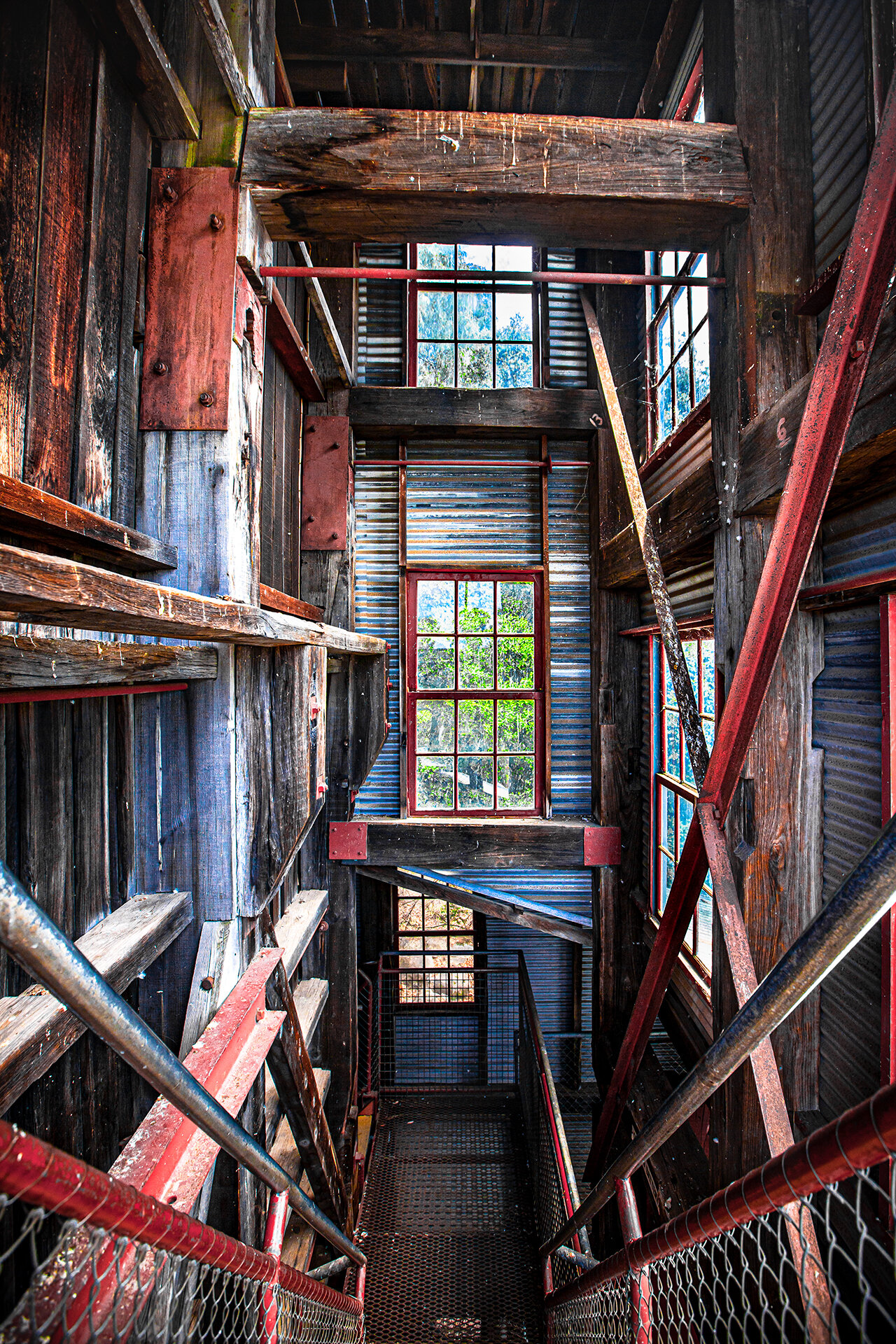
The mine was opened in 1939 by the Central Deborah Gold Mining Company and was one of the few to stay open during World War II. The mine was decommissioned in 1954 and was reopened in 1986 as a tourist attraction offering underground tours.
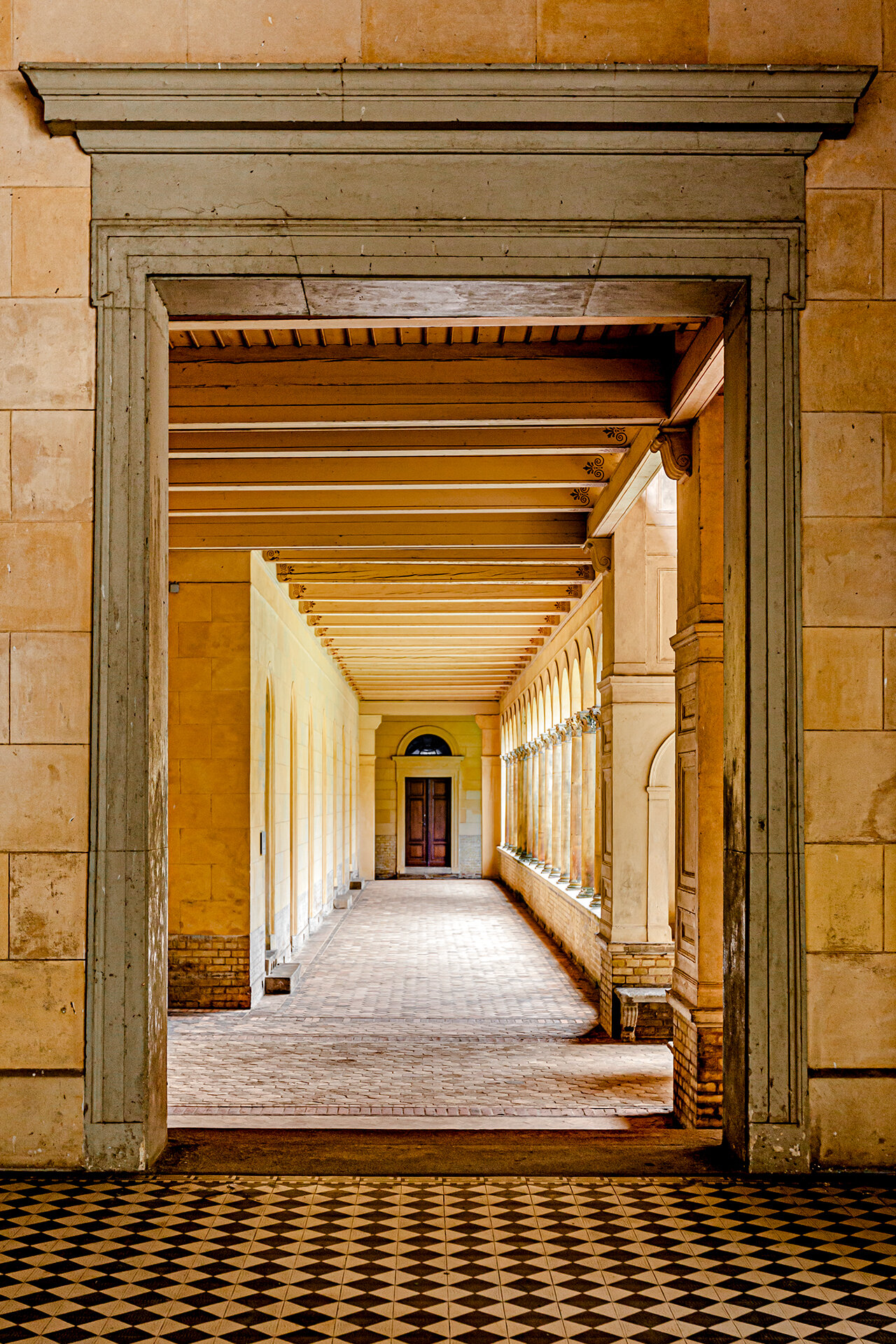
Completed in 1854 under the artistically gifted King Frederick William IV, the Protestant Church of Peace was designed by the Prussian court architect, Ludwig Persius and built on the palace grounds of Sanssouci Park in Potsdam.
Visit the church on Google Maps.
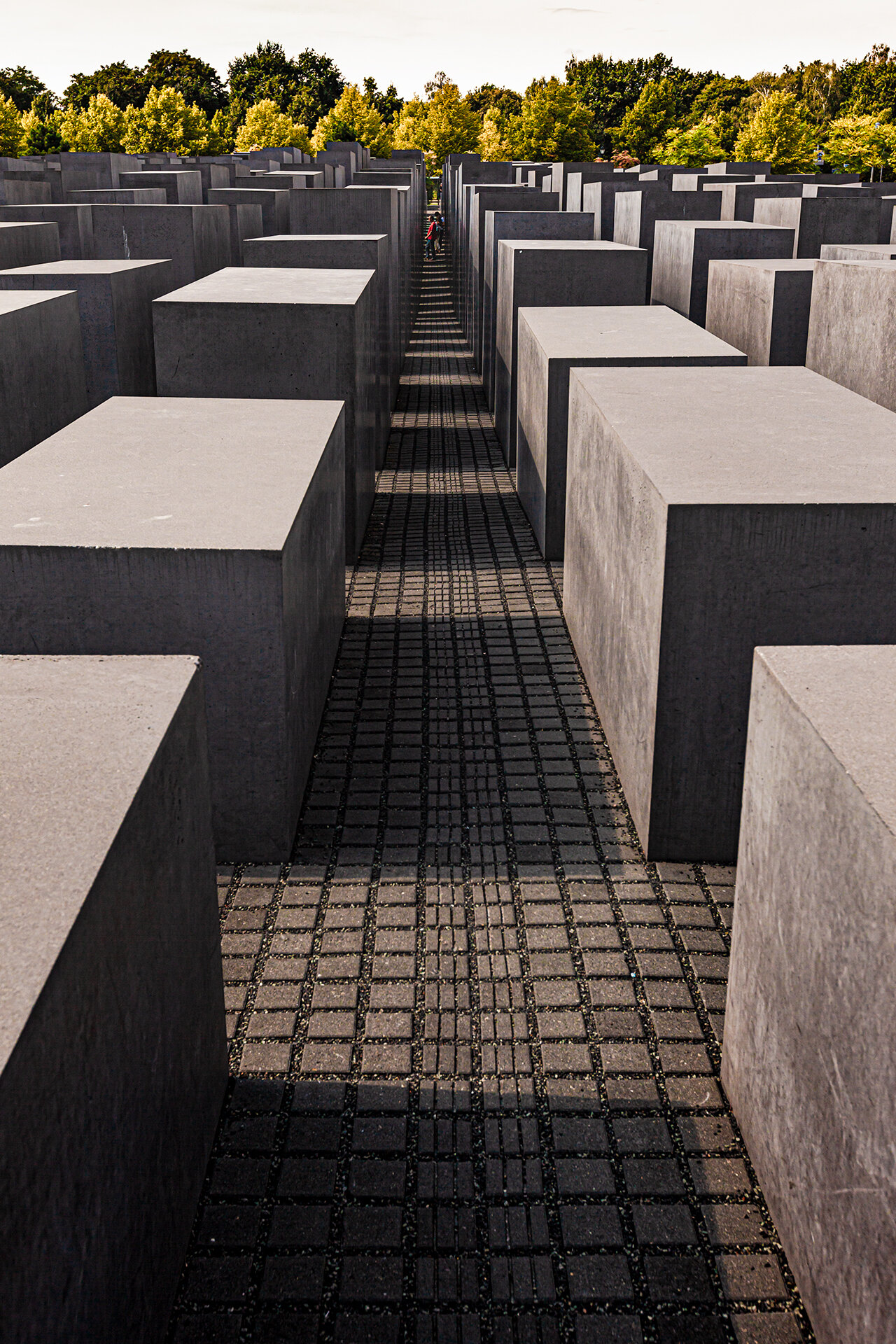
This is a memorial in Berlin to the Jewish victims of the Holocaust, designed by architect Peter Eisenman and engineer Buro Happold. The site is covered with 2,711 concrete slabs, arranged in a grid pattern on a sloping field.
Visit this memorial on Google Maps.
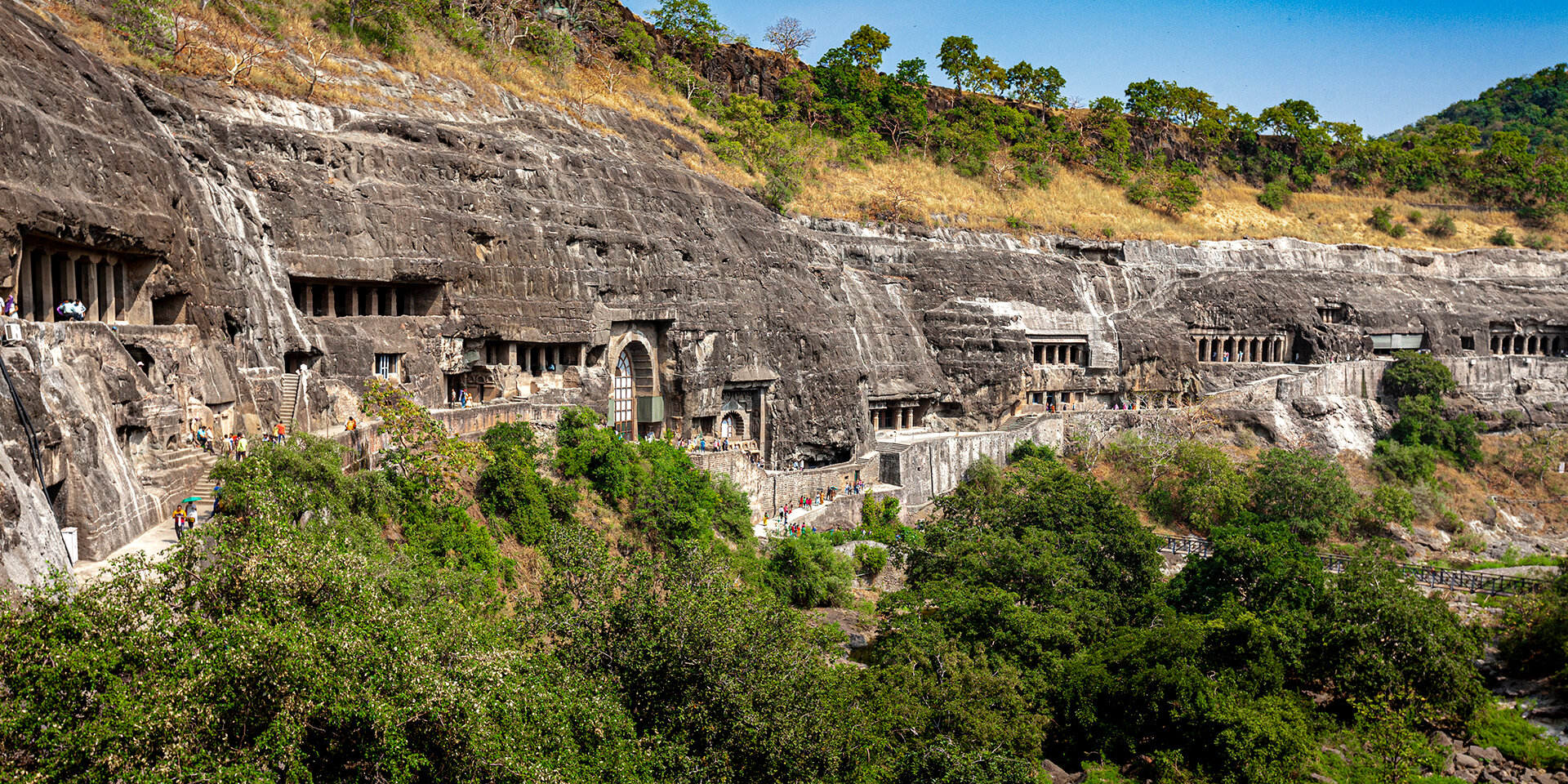
This site is composed of approximately 30 caves cut into a 75 m wall of rock, housing ancient monasteries and worship-halls of different Buddhist traditions, dating back to the 2nd century BCE.
Visit the Ajanta Caves on Google Maps.
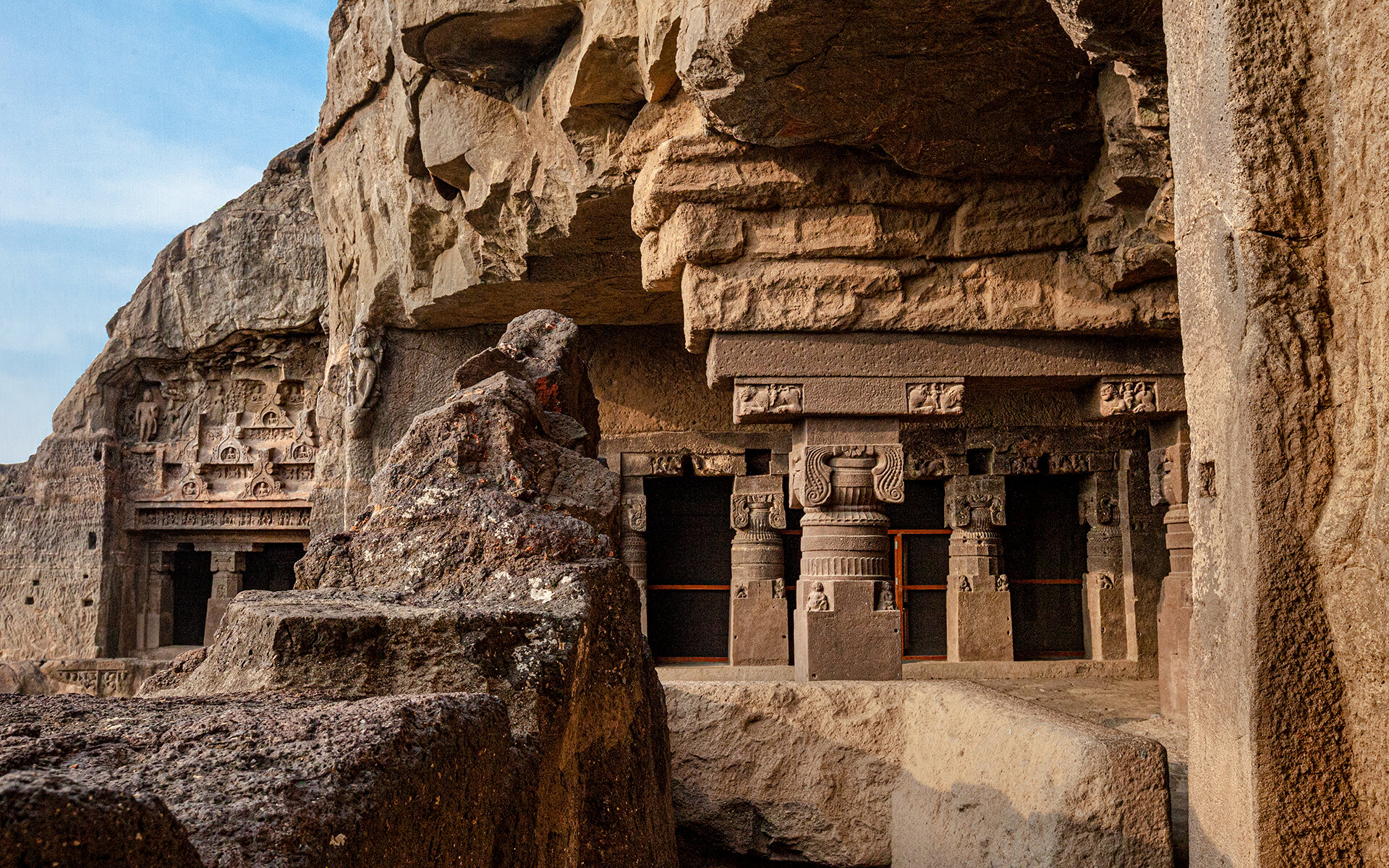
Ellora is a UNESCO World Heritage Site located in the Aurangabad district of Maharashtra, India. It is one of the largest rock-cut monastery-temple cave complexes in the world. It features Hindu, Buddhist and Jain monuments and artwork, dating from the 600–1000 CE period.



























This French Renaissance style building with a mansard roof was opened as the "Public Library, Museum and Art Gallery for the colony of South Australia" on 18th December 1884.
Seen here is the main interior chamber of the Mortlock Wing that has two galleries, two levels of balconies featuring gold-ornamented wrought iron balustrading, and the beautiful glass-domed roof that allows natural light to flood the chamber.
Visit this site on Google Street View
Read the history of the Mortlock Wing
Construction of this Gothic Revival style cathedral began in 1897 but was completed only 80 years later in 1977. With an 87 m spire, this is the third tallest church in Melbourne.
See this scene on Google Street View.
Berlin is known for its hundreds of beautiful and unique courtyards, but the hidden courtyard within Schwarzenberg House at Hackescher Market in Berlin is my favourite. It’s home to hidden shops, bars, cafés, museums, and works of art.
This 142 m towing tank at the Technical University of Delft is used to test and study ship hydromechanics.
More on Towing Tank 1.
Visit TUDelft on Google Maps.
Bendigo Tramways started operating in June 1890. Since then, people in this small town have seen their trams propelled by battery, steam, and finally, electric traction. The depot repairs and maintains the trams in fantastic condition.
Visit the Bendigo Tramways website.
This ornate metal door is one of four that can be found at the twin-entrances to the museum. The museum was founded by King Maximilian II of Bavaria in 1855.
See these entrances on Google Maps.
This skyscraper designed by C.Y. Lee and C.P. Wang was officially classified as the world's tallest from its opening in 2004 until 2010.
In 2011 Taipei 101 received a Platinum rating under the LEED certification system, becoming the tallest green building in the world.
Visit Taipei 101 on Google Maps.
The Holocaust Tower is a 24 m tall silo designed by architect Daniel Libeskind within the premises of the Jewish Museum in Berlin.
The bare concrete structure is neither heated nor cooled, and its only light comes from a small slit in its roof.
Visit the Holocaust Tower on Google Maps.
Known for its investigative journalism department, Der Spiegel operates one of the most widely read German-language news websites and publishes Europe’s most circulated weekly news magazine.
Der Spiegel headquarters in Hamburg was designed by Henning Larsen Architects and completed in 2011.
Dirty Aquarium (2013) is an art installation within an indoor car park in Lisbon by artist Artur Bordalo aka Bordalo II.
The materials for this installation came from garbage collected along the shores of the river Tagus.
This large private garden and park is home to multiple buildings and structures, including this aisle of calligraphy.
Built with more than three thousand pipes, this instrument is one of three large pipe organs designed and built by Jonathan Bätz. It was constructed between 1837 and 1839 and is still in use today
Visit the Delft New Church website.
Chand Baori is a step-well situated in the village of Abhaneri near Jaipur. It consists of 3,500 narrow steps and extends approximately 30m into the ground making it one of the deepest and largest step-wells in India.
The Sony Center is a Sony-sponsored building complex located at the Potsdamer Platz in Berlin, Germany designed by Helmut Jahn. It opened in 2000 and houses Sony's German headquarters.
This 13th-century complex built during the Delhi Sultanate reign houses a water tank, an Islamic seminary, a mosque, a tomb, and pavilions built around an urbanized village dating back to the medieval period.
Visit the Hauz Khas Complex on Google Maps.
These steps and other structures in the 14th-century Shiva temple in Hampi have been buried for more than 400 years and were unearthed in the 1980s. Hampi today is a UNESCO World Heritage Site.
Visit this Underground Shiva temple on Google Maps.
In a 2013 collaboration, Italian street artist Pixel Pancho and Portuguese street artist Vhils combined their unique styles to create this mural located in Lisbon.
Visit the BMW Welt website.
Visit the BMW Welt on Google Maps.
The Memory Void, one of the symbolic spaces on the ground level of the Libeskind building, includes the installation Shalekhet by Menashe Kadishman which pays homage to victims of war.
More than 10,000 faces with open mouths, cut from heavy round iron plates, cover the floor of the void.
Visit the Shalekhet web page.
It is tradition to build narrow, long, and tall houses in Portugal. Building this way preserves heat within the interior, and allows each construction to make the most of the land it has been allocated. I was amazed at how the Portuguese build straight on slopes. These two houses have different roof-clearance heights on the ground floor though they are in the same building. They are also surprisingly close to the tram track.
This 6th-century temple built in the Hemadpanthi architectural style consists of numerous ridges on the exterior with decorative images having iconic as well as artistic significance. These hand-carvings depict deities or events referred to in Hindu Puranas.
The Marie-Elisabeth-Lüders-Haus is the third new parliament building on the Spree and was inaugurated in December 2003.
See the Parliament on Google Maps.
Carved into solid rock around 650 CE, Ellora Cave-10 houses a cathedral-like stupa hall used for prayer. At the heart of this cave is a 15-foot statue of Buddha seated in a preaching pose
The mine was opened in 1939 by the Central Deborah Gold Mining Company and was one of the few to stay open during World War II. The mine was decommissioned in 1954 and was reopened in 1986 as a tourist attraction offering underground tours.
Completed in 1854 under the artistically gifted King Frederick William IV, the Protestant Church of Peace was designed by the Prussian court architect, Ludwig Persius and built on the palace grounds of Sanssouci Park in Potsdam.
Visit the church on Google Maps.
This is a memorial in Berlin to the Jewish victims of the Holocaust, designed by architect Peter Eisenman and engineer Buro Happold. The site is covered with 2,711 concrete slabs, arranged in a grid pattern on a sloping field.
Visit this memorial on Google Maps.
This site is composed of approximately 30 caves cut into a 75 m wall of rock, housing ancient monasteries and worship-halls of different Buddhist traditions, dating back to the 2nd century BCE.
Visit the Ajanta Caves on Google Maps.
Ellora is a UNESCO World Heritage Site located in the Aurangabad district of Maharashtra, India. It is one of the largest rock-cut monastery-temple cave complexes in the world. It features Hindu, Buddhist and Jain monuments and artwork, dating from the 600–1000 CE period.